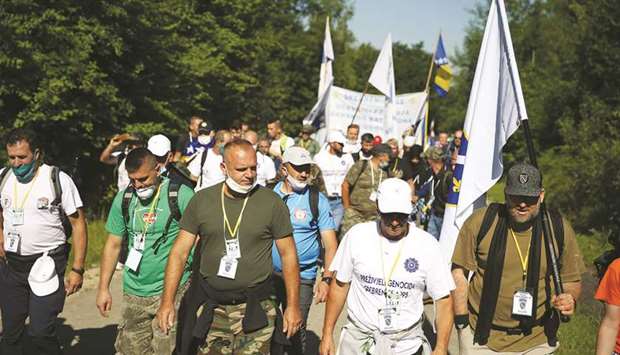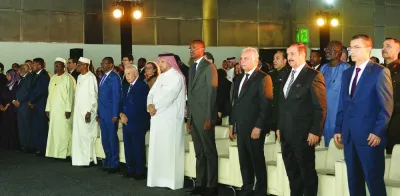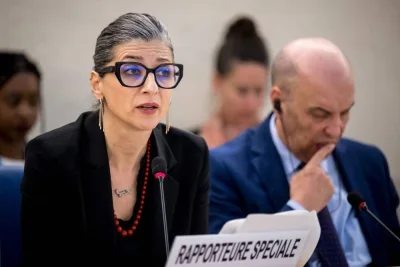Dozens of survivors of the Srebrenica genocide yesterday marched through the woods of eastern Bosnia along the route they took to escape Bosnian Serb death squads a quarter of a century ago this week.
Organisers had banned more people from joining due to the coronavirus pandemic and participants could not start the peace march as customary in the village of Nezuk due to a rising number of infections in the area.
Wearing face masks and waving Bosnian flags, the marchers passed the mass graves in which thousands of victims’ bodies have been found over the past two decades.
“We are sending messages to our kids so they will not forget what happened in Srebrenica,” said march participant Salih Mulalic. “I hope the genocide will not happen to anyone again.”
Bosnian Serb forces led by General Ratko Mladic attacked the eastern enclave of Srebrenica where about 40,000 Bosnian Muslims had found shelter under United Nations protection.
After Srebrenica fell into Serb hands on July 11, 1995, the women and children were separated from men and bussed to territory controlled by the Bosnian army.
Some 8,000 men and boys were then executed by Bosnian Serb forces, about 6,000 of them as they tried to escape through the woods and buried in mass graves.
In previous years, thousands of Bosnians and supporters have joined the three-day march along a 100km forest trail.
This year, the commemorations were being marked mainly through exhibitions and conferences, and eight recently identified victims will be buried at a cemetery on July 11, anniversary day.
“This march is sad, depressing, it’s unusual without people,” said survivor Ramo Kadric, who was one of 15,000 men and boys trying to flee Bosnian Serb forces. “It reminds me of war.”
Meanwhile, the head of a UN court has said the Bosnian Serb government is indoctrinating children with denials of the 1995 genocide and wrecking attempts at reconciliation.
Judge Carmel Agius, president of the court completing war crimes trials stemming from the breakup of Yugoslavia, added unhealed ethnic divisions in Bosnia were driving the younger generation away in their tens of thousands.
Members of the Republika Srpska government have repeatedly questioned the number of Bosnian Muslims killed in Srebrenica a quarter of a century ago this week.
They also accuse the Yugoslav war crimes tribunal of anti-Serb bias.
“What you find is a humongous effort on the part of the authorities to indoctrinate their children with their own version of the events,” Agius told Reuters.
The Serb member of Bosnia’s tri-partite presidency, Milorad Dodik, last year called the Srebrenica genocide “a fabricated myth”.
He has also opened a student dormitory named after former Bosnian Serb leader Radovan Karadzic, who is serving a life sentence after being convicted of genocide for Srebrenica.
Last month in the northern town of Gradiska Bosnian Serbs put up a huge mural at a primary school of Ratko Mladic, military leader of Bosnian Serb forces as they overran Srebrenica, which had been declared a UN safe area in 1993 and was protected by lightly armed Dutch troops.
Bosnian Serb Prime Minister Radovan Viskovic said last weekend a new report would be completed in a month or two.
“In this way the Serb Republic government wants to bring the truth about the suffering of Serbs...closer to the international community and historians, who when they write about these events one day, will have clear evidence that truth is not only what one side states,” Viskovic said.
Agius said the international war crimes cases have left no room for misunderstanding: “They all come to one conclusion: namely that what happened in Srebrenica was genocide.”

People walk through a forest near the village of Crni Vrh, Bosnia, on the ‘March of Peace’, to retrace the route taken by Bosnian Muslims who fled Serb forces as they slaughtered 8,000 Muslims in 1995.


